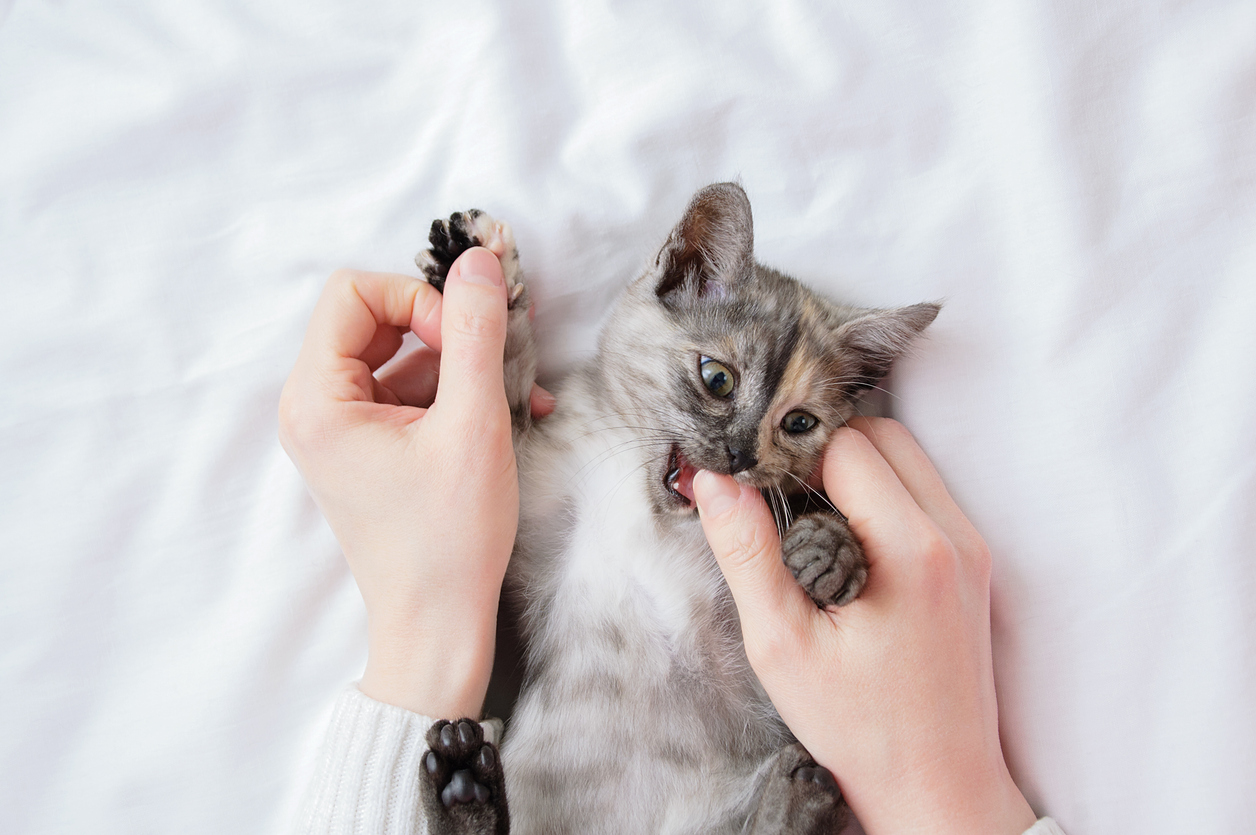Kitten teething is a natural part of your pet’s early growth stages. Knowing how to navigate this time can help ensure your kitten’s comfort while protecting your home from damage. In this comprehensive guide, we explore the key aspects of kitten teething, how to support your kitten through this phase, and actionable tips to maintain their dental health.
What is Kitten Teething?
Kitten teething refers to the process of a kitten’s baby teeth falling out and being replaced by permanent teeth. This period typically spans from when they are 3 weeks to 6 months old. As the adult teeth come in, the kitten may experience discomfort, which often leads to an increase in chewing or biting behaviors. Understanding when and why your kitten is teething can help you address their needs effectively.
Teething Timeline for Kittens
3 to 4 Weeks Old: The first set of baby teeth, also known as deciduous teeth, begins to erupt. These include incisors and canines, which help kittens start exploring their surroundings.
4 to 6 Weeks Old: Pre-molars begin to emerge, and the full set of 26 baby teeth is in place. At this stage, the kitten starts weaning off their mother’s milk and transitioning to solid food.
3 to 4 Months Old: The process of losing baby teeth begins, and adult teeth start erupting. Kittens may begin to chew on various objects as their gums become sensitive.
6 Months Old: By this time, your kitten will have a complete set of 30 adult teeth. The teething process generally ends, but ongoing dental care remains essential for maintaining their oral health.
Recognizing Teething Symptoms
Understanding the symptoms of teething will allow you to ease your kitten’s discomfort and protect your home from excessive chewing. Some common signs include:
- Increased Chewing: Kittens often chew on furniture, shoes, or even your hands to relieve gum pain.
- Red or Swollen Gums: A common sign of teething is inflamed or sensitive gums as the new teeth push through.
- Drooling: You may notice more saliva than usual.
- Loss of Appetite: Gum soreness may cause a kitten to be reluctant to eat.
- Mild Bleeding: Occasionally, you may find a small amount of blood on toys or near the mouth, which is normal as teeth erupt.
How to Help a Teething Kitten
Managing your kitten’s teething phase requires proactive care to minimize discomfort and safeguard your belongings.
Provide Teething Toys
Teething kittens need an outlet for chewing. Look for safe, durable toys that are designed specifically for teething. Soft rubber or fabric toys can massage their gums and help the teeth break through without damaging their mouth.
Freeze Wet Washcloths
Freezing a damp washcloth can be an excellent home remedy. Kittens can chew on the cold cloth, which soothes inflamed gums and offers a safe alternative to furniture and shoes.
Maintain Proper Nutrition
Kittens need a balanced diet to support their rapid growth, including during teething. Opt for high-quality kitten food that includes a mix of dry kibble to encourage chewing and help clean the teeth.
Regular Vet Checkups
Your vet should examine your kitten’s teeth during routine checkups to ensure everything is developing properly. If the kitten retains some baby teeth, it may require a professional extraction to prevent overcrowding or alignment issues.
Protecting Your Home from Kitten Chewing
Kittens in the teething stage are notorious for chewing on anything they can find. Protect your belongings by offering appropriate alternatives and kitten-proofing your home.
Clear Tempting Items
Remove shoes, cords, or other items that your kitten might find appealing to chew on. Replace these items with approved chew toys that are easily accessible.
Apply Bitter Spray
Bitter apple or other pet-safe deterrent sprays can discourage your kitten from chewing on furniture or wires. Spray these on vulnerable areas to protect your home.
Use Scratching Posts
Invest in several scratching posts and place them in areas where your kitten tends to chew. Scratching posts not only help with teething but also aid in developing strong claws and muscle coordination.
Dental Care After Teething
Once the teething process is complete, maintaining good oral hygiene is essential for your kitten’s long-term health.
Brush Your Kitten’s Teeth
Regular tooth brushing helps prevent plaque buildup and dental diseases. Use a soft-bristled toothbrush and feline toothpaste to brush their teeth at least twice a week.
Dental Treats and Chew Toys
Dental treats and chew toys are great for promoting good oral health by helping to remove plaque and tartar. Look for veterinary-approved dental treats that are safe for kittens.
Schedule Routine Dental Exams
Make dental checkups a regular part of your kitten’s vet visits. Early detection of dental problems can prevent more serious issues later in life, such as gingivitis or tooth decay.
Conclusion
Kitten teething is a challenging yet essential phase in your pet’s development. By understanding the timeline, recognizing the signs, and providing the right care, you can help your kitten through this process while protecting your home and their long-term health. Regular dental care after teething is crucial for maintaining their beautiful set of adult teeth and ensuring a happy, healthy life.
By following these tips, you can support your kitten through this natural but sometimes difficult stage of their growth.
Yours in Paws,
The PawPaw Team.

